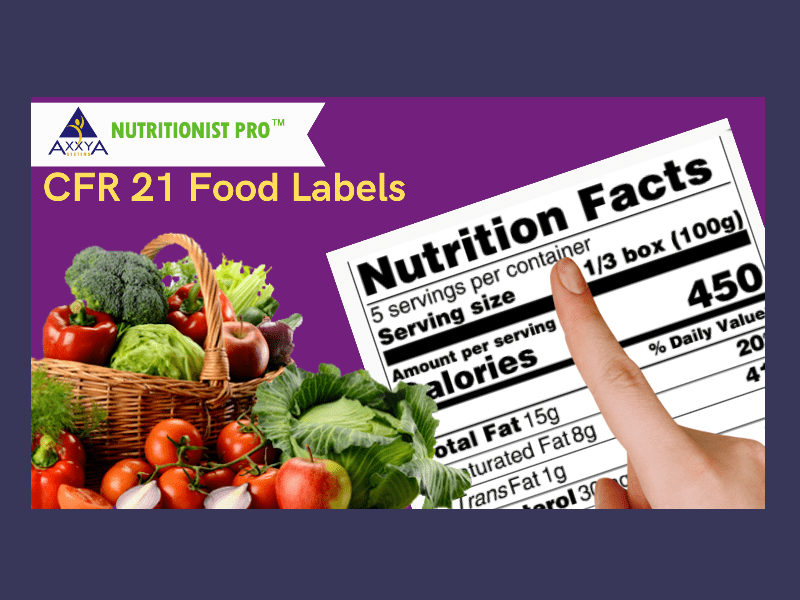Food is directly related to health and well-being and when we eat food prepared by someone else, we are basically entrusting their expertise. Therefore, it is very important for food manufacturers to understand their responsibilities and keep the consumers well informed about the food products they are producing and hence, the necessity for food labeling. Food producers have an obligation to provide food for safe consumption. Labeling is a vital part for packaged foods.
What information does a food label include?
Food labels typically include – the nutritional information which comprises of the approximate amount of energy, protein, vitamins, carbohydrates, sugar, fat, saturated fat, fatty acid, cholesterol, dietary fiber, etc., present in the food, a complete list of ingredients, details of allergens present (if any), name of the food, serving instructions, storage instructions, and all other information necessary for safe consumption.
What are CFR 21 guidelines?
CFR stands for Code of Federal Regulations and Title 21 of CFR comprises three divisions – Chapter I: Food and Drug Administration (FDA), Chapter II: Office of National Drug Control Policy (ONDCP), and Chapter III: Drug Enforcement Administration (DEA). CFR 21 governs the food and drugs in the United States. Title 21 is an essential wing of CFR that states all the regulatory information related to food labeling in the United States. There are various subparts of CFR 21 and here they are –
- Subpart A includes the general provisions
- Subpart B includes the specific food labeling requirements
- Subpart C includes the specific nutrition labeling requirements and guidelines
- Subpart D includes the specific requirements for nutrient content claims
- Subpart E includes the specific requirements for health claims
- Subpart F contains the specific requirements for descriptive claims excluding the nutrient content claims and health claims
- Subpart G states the exemptions from food labeling requirements
Is this food labeling process performed by hand or software?
Food labeling process can be done by hand but may be very tedious and time consuming. There are applications and software which now make it easier to create food labels from anywhere and are accessible from any device. This process is easy to perform and faster than doing it by hand.
What are other options for creating food labels?
Food labels can also be created by labs that will chemically analyze the food item. A food sample is provided to the lab and through a process of chemical analysis the nutrition label data is created. Each food item sample has to be sent to the lab and the process can be very expensive. However, another process of creating a label is via an ingredient database, such as the one built into the Nutritionist PRO™ application. The database consists of ingredients from around the world and can be used to calculate nutrient breakdown of recipes and food labels. The CFR 21 guidelines allow either process for label creation as long as clean and clear notes are kept for the process selected.
Use an advanced food labeling software offered by Axxya Systems LLC
Axxya Systems presents Nutritionist PRO™, a top-notch food labeling software. It is widely used in food manufacturing, catering facilities, restaurants, by chefs for recipe creation, checking the nutrient values, and most importantly, for creating nutrition facts labels for food packages and containers. By using this software, the users can create CFR 21 Food labels meeting all the essential guidelines of USA Food Labeling. The best part is the software is easy to use and generates unlimited nutrition facts labels which comply with USA guidelines, as well, it generates ingredient statements for labels and gives the ability to add unlimited recipes. We offer both desktop and online options for more flexibility.
